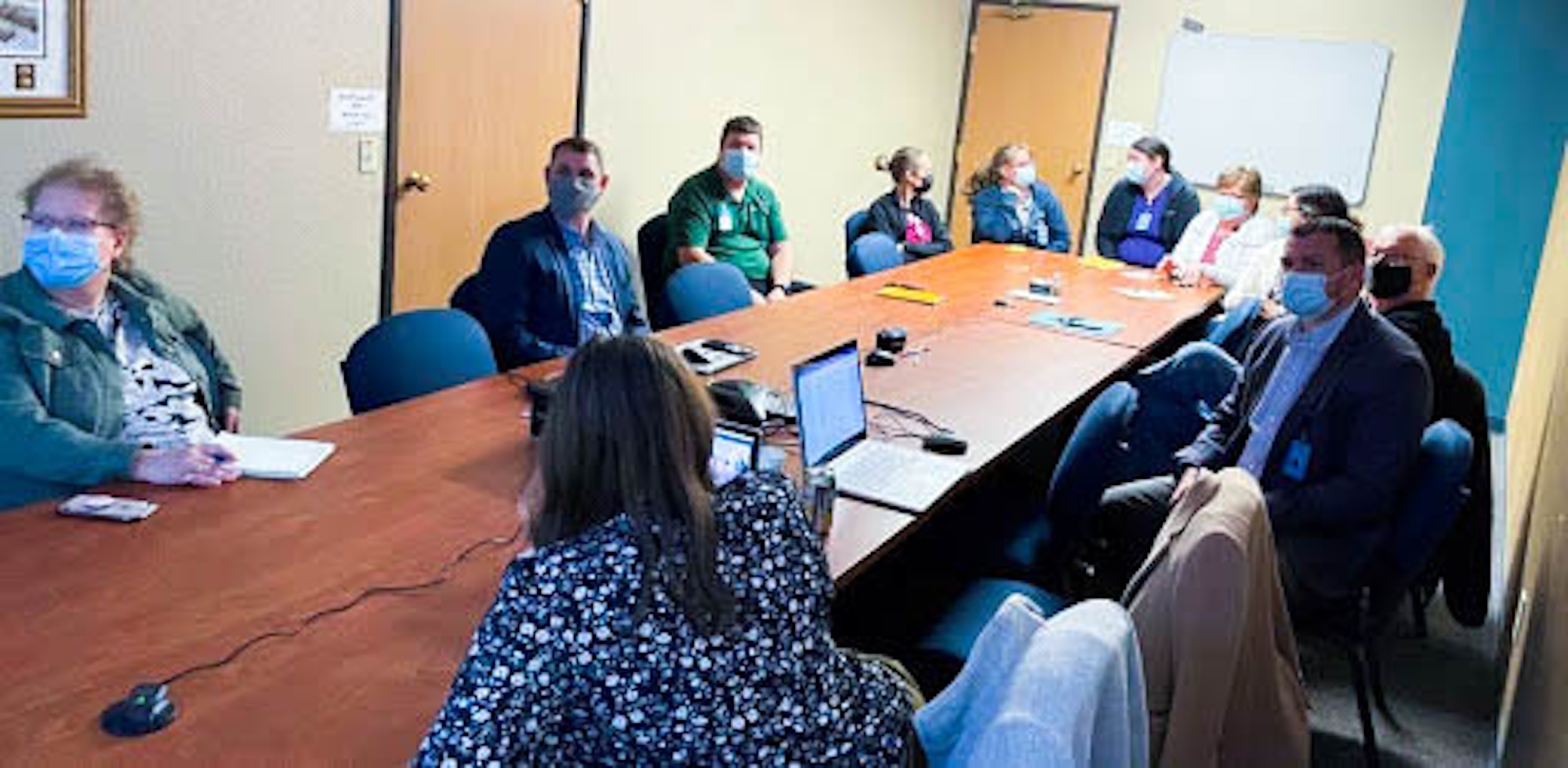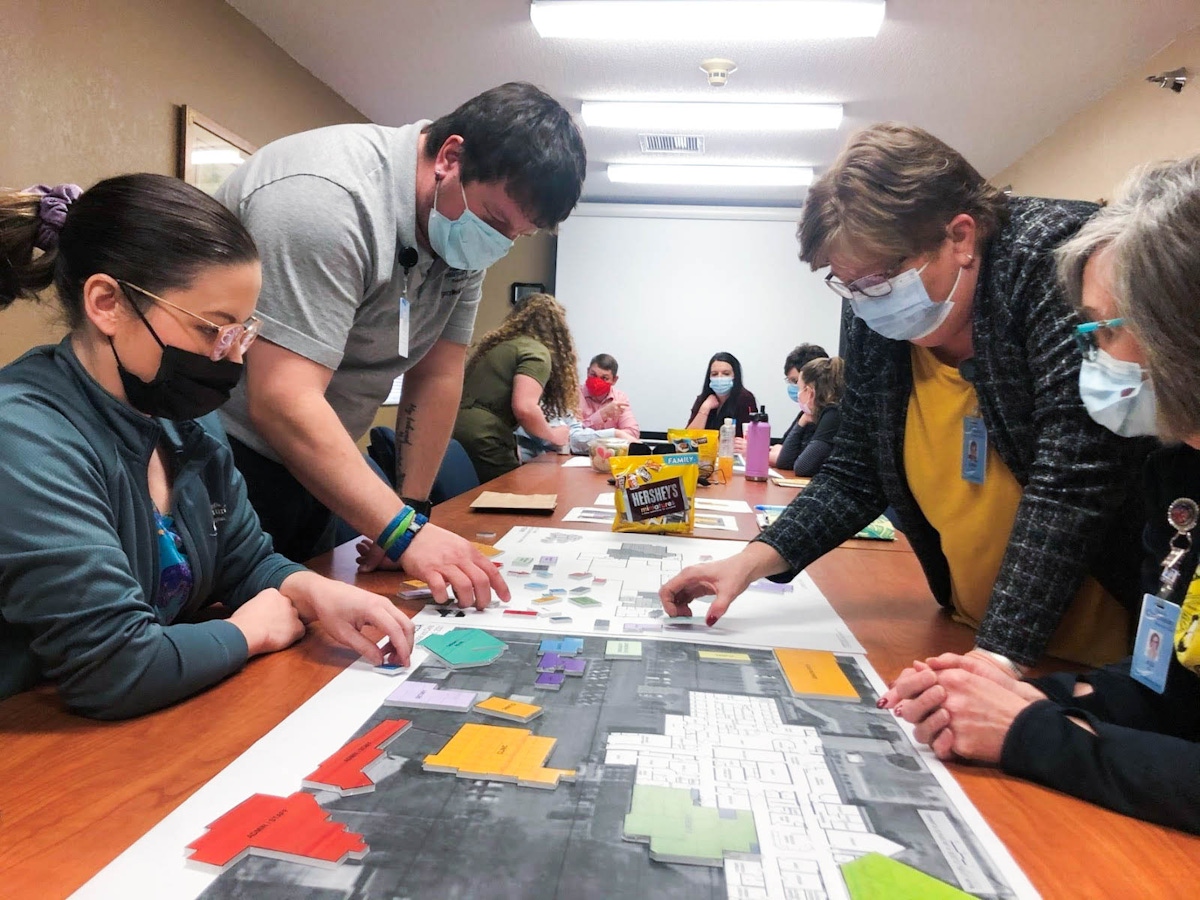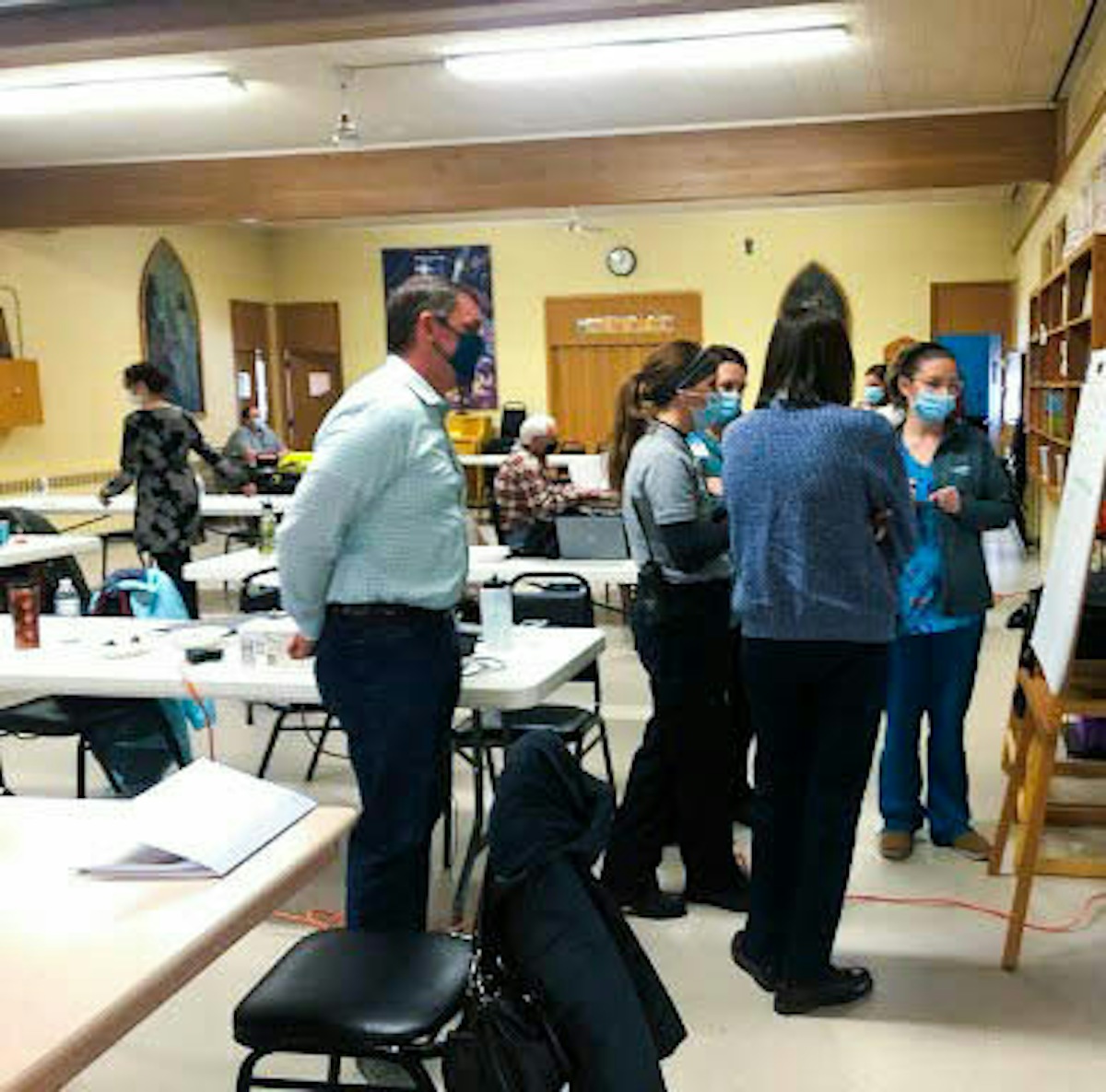
As we plan and design healthcare facilities for the communities we serve, it is imperative to identify, invite in and listen to the voices of all community stakeholders to create inclusive designs. By connecting all participants within the process, we can ensure that the outcomes respond to the entire community’s needs. The patients and their families, the care team staff and organizational leadership have collective ownership of the process and its results.
The following are the main tenets of equity, diversity and inclusion, an overview of a traditional and inclusive planning process, and a case study of an all-inclusive facility master planning process from Madelia Community Hospital and Clinic, as well as our keys to success in generating their plan. This planning process will provide you with a clear understanding of the expectations and some initial criteria that can guide your organization and community's current or future planning efforts.
As industry momentum is gaining on broadening our minds within equity, diversity and inclusion (EDI), we must match this progress in our design approaches. We believe that it is our role to ensure that all voices are heard in the healthcare industry. This inclusion will continually evolve our planning and design work for the better and lead to more inclusive outcomes. However, before this process, users must have a basic understanding of the terminology for EDI efforts.
AIA defines equity, diversity and inclusion as follows:
Equity: Equal opportunity and access according to individual needs.
Diversity: A mix of people with a full range of visible and invisible personal and group characteristics, backgrounds, experiences and preferences.
Inclusive: An environment in which everyone is welcomed, respected, supported and valued.
Following an understanding of EDI efforts, we can help facilitate practices that intentionally incorporate inclusivity into planning and design approaches. These all-inclusive practices include providing stakeholder ownership through full participation, an all-encompassing needs analysis with thoughtful engagement, outcomes that emphasize a feeling of community belonging and empowering leaders with inclusive information as they allocate resources. To fully understand the difference between traditional and all-inclusive practices, below is a summary of the opportunities where inclusivity enhances the facilitation.

Traditional Process:
In the traditional process, a core planning group is formed to fully participate in all phases of planning. All stakeholders have involvement, though it is primarily during gathering data and on the periphery of the remaining phases. As we endeavored to ensure a more inclusive process, several questions were considered in its development. How can we gain full participation throughout the process? Where can we increase the inclusivity within our range of people and information? How can we achieve outcomes that promote the feeling of community involvement? When analyzing these considerations, there are several opportunity zones where assurance of inclusivity can occur, leading to the all-inclusive design process.

All-Inclusive Process:
The all-inclusive process provides several unique differentiators that are summarized from the list of the opportunity zones identified above. Included within each opportunity zone is a takeaway dedicated to the value of each section. These takeaways are provided by one of our clients, Jeff Mengenhausen, CEO of Madelia Health.
Opportunity Zone 1: Make the time to take the time. Ensure there is enough time to engage all relevant stakeholders.
Madelia Health Takeaway: We know that we’re all busy. Through this process, we made sure to allocate enough time in advance to receive input from everybody on our team, past patients and their families, and from community stakeholders.
Opportunity Zone 2: Assemble a core planning group that represents the entire cross-section of your organization.
Madelia Health Takeaway: This group should include everyone from leaders, providers, frontline staff and support staff, but this group needs to be made up of those people who were thinking outside of the box. This was especially important as we needed them to look at all aspects of our data to understand where the gaps are today and how to address them with the plan.
Opportunity Zone 3: Verify that the data gathered is inclusive of the needs of all organizational and community stakeholders.
Madelia Health Takeaway: We reviewed all past data, discussed all relevant stakeholders that are impacted by our organization, gathered information associated with these patients, care team members, and community members, and developed a stakeholder engagement plan to ensure their data was included in the process.
Opportunity Zone 4: Engage stakeholders from the full cross-section of your community through a participatory process to analyze relevant data and develop comprehensive planning criteria to guide project outcomes.
Madelia Health Takeaway: When diving into the planning criteria for options development, balance and compromise are required to achieve the right outcomes for the organization and community, not just one group of stakeholders.
Opportunity Zone 5: Re-engage stakeholders to review the option selected and offer feedback to pressure test it and ensure consensus and ownership that the selected final option meets the planning criteria.
Madelia Health Takeaway: Through this inclusive planning process, the Madelia Health board members were able to build confidence that the outcomes proposed represented all stakeholders and aligned their organization for future success. In fact, one of our board members felt confident (and excited) enough to lead all of the board updates and discussions on the master planning process.
Opportunity Zone 6: Assemble a project planning and implementation committee representative of the stakeholders engaged throughout the planning process.
Madelia Health Takeaway: Engaging stakeholders throughout the planning process makes assembling the project implementation team easy. In all stakeholder sectors, we began to see an emergence of advocates who were passionate about the project and its implementation.

These opportunity zones are the main differentiators between the traditional and all-inclusive process. These zones ensure ample time is allocated to engage all stakeholders, thoughtful consideration of data is taken across the spectrum of needs, project advocates are created by understanding user experiences, decision-makers are empowered with inclusive information and project outcomes are achieved through holistic ownership and consensus.


We've developed a list of takeaways throughout the Madelia Health experience of connecting equity, diversity and inclusion initiatives into our process. We believe that by taking the time to ensure each of these steps is utilized, we can adequately address the needs of all community and organization stakeholders.
Standing by our mission of designing meaningful experiences, we believe it is crucial to utilize an all-inclusive design process to ensure all voices are heard. By connecting all voices into the process, outcomes that respond to the entire community’s needs are provided. The patients and their families, the care providers and organizational leadership, have collective ownership of the process and its results. If you need any additional information about how we can assist in the future for your planning and design phases, do not hesitate to reach out to our team at Wold Architects and Engineers (call 1-888-254-6789 or email info@woldae.com).
Additionally, we recommend taking the time to review content on the subject of EDI to grow in understanding and see how it can align with your community. Below are a few articles we specifically recommend for inclusive design:
American Hospital Association Institute for Diversity and Health Equity
AIA Guides for Equitable Practice
Biomed Central Article: Valuing All Voices: refining a trauma-informed, intersectional and critical reflexive framework for patient engagement in health research using a qualitative descriptive approach